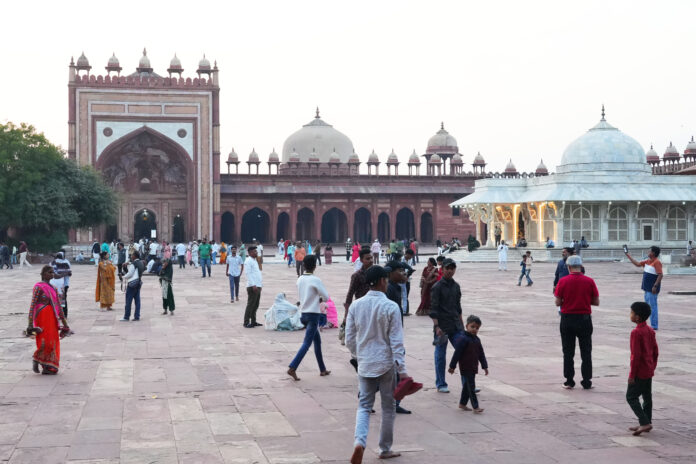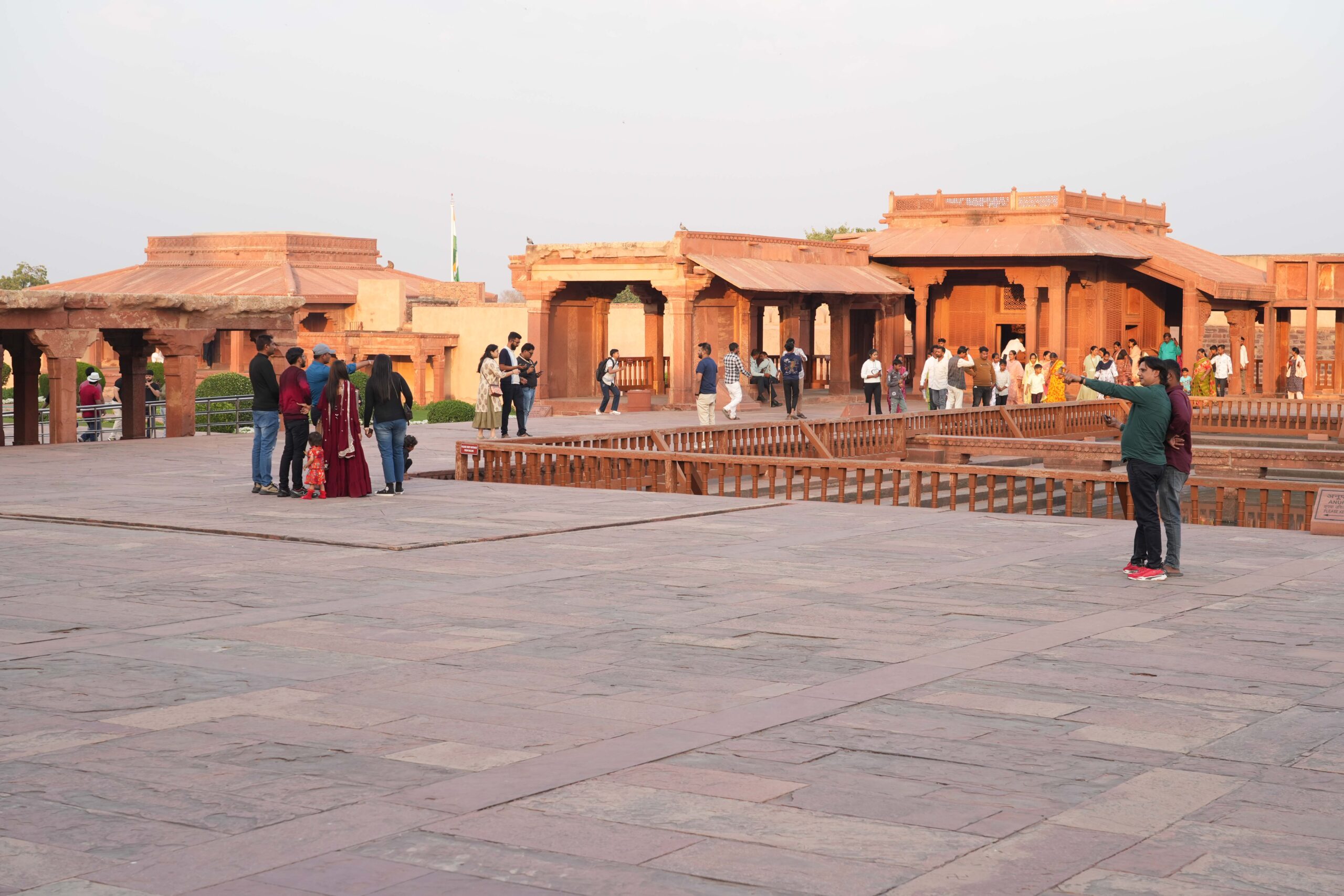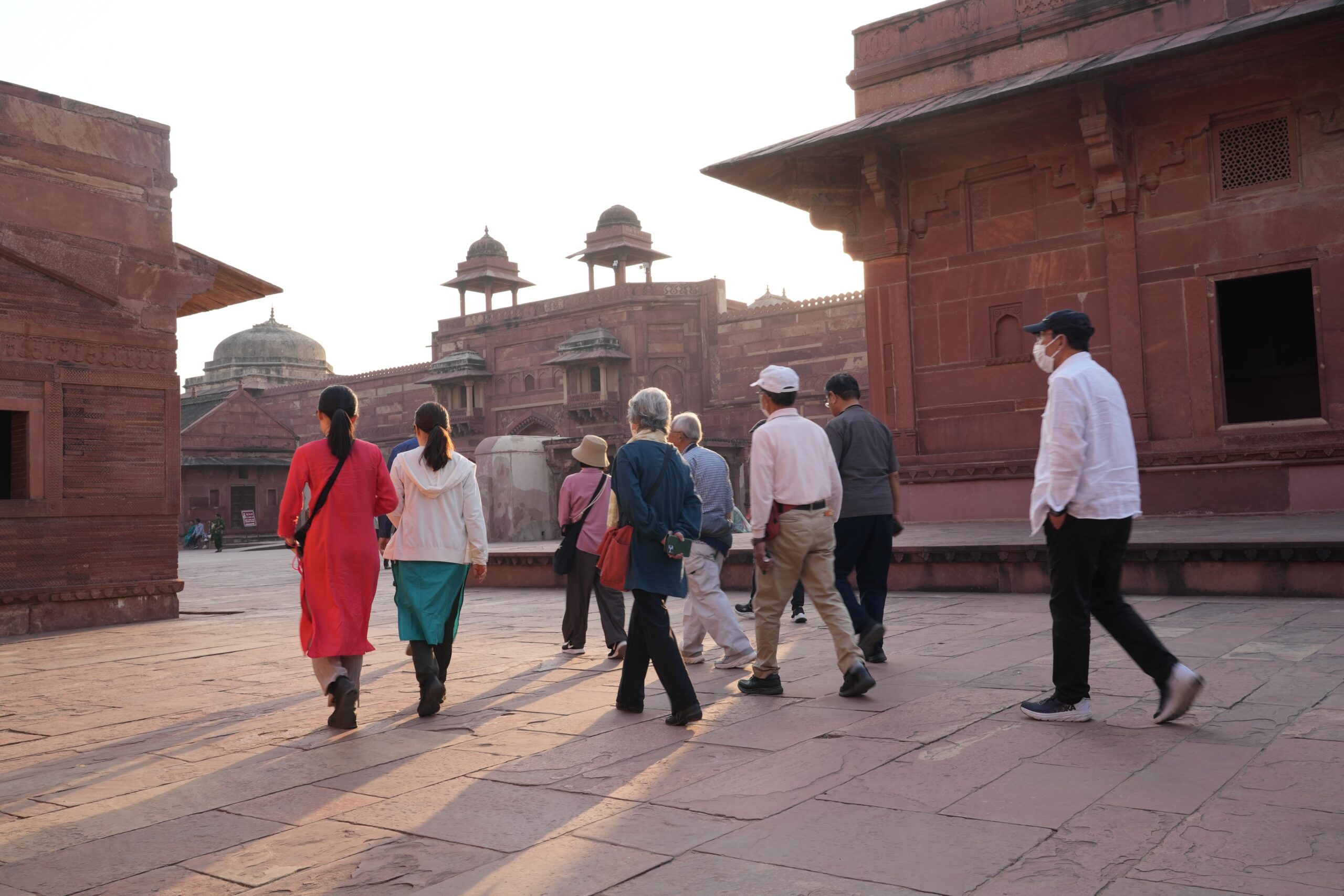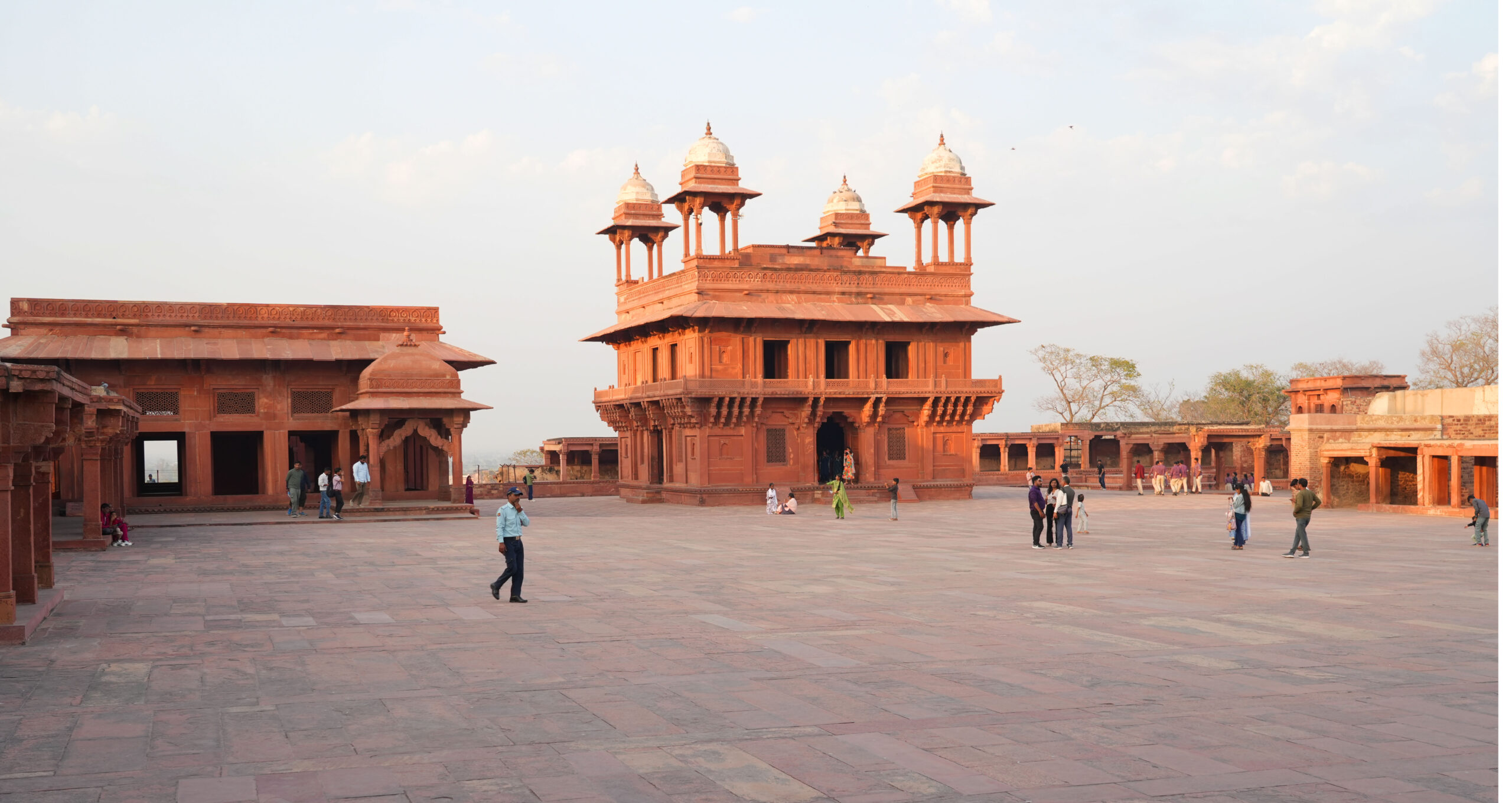
Farheen Saifi, TwoCircles.net
Agra (Uttar Pradesh): It was around 4 PM on February 16 when a man in a round cap and a muffler stood near the entrance of Fatehpur Sikri fort, waiting for tourists. His name is Mohammad Chaand, though many call him “Bharat Sarkaar”. A tourist guide for the past 30 years, he has dedicated his life to sharing the rich history of Fatehpur Sikri with visitors from around the world.
Located in the walled city, which once stood proudly on a ridge, is now accessible via a well-paved road leading to its grand entrance. Built in 1571 by Emperor Akbar, it served as the Mughal capital for only about 10 years. The city was abandoned in 1585 when its primary water source, a spring-fed lake, began to dry up. Within the city lie many noticeable structures, including Birbal’s house, the Taksal (Mint), the Queen’s residence, Caravan Sarai, the records office, Karkhana (workshops) and the treasury.
“Akbar left this place after four years when water became scarce. He moved to Lahore, then to Allahabad and finally to Agra,” Chaand explains.

The Fatehpur Sikri fort, around 37 kilometres from Agra, spans approximately 3,500 acres and remains one of the most enigmatic Mughal architectural marvels. Recognised as India’s first planned Mughal city, Fatehpur Sikri showcases a unique blend of Persian, Indian and Islamic architectural styles, primarily constructed using red sandstone — abundantly available in Agra.
The complex is divided into three sections. It includes Jama Masjid, one of the largest mosques, along with administrative and residential buildings, palaces and homes for the Mughal court, army and servants. Even after Akbar shifted his capital to Lahore in 1585, Fatehpur Sikri continued to serve as a temporary retreat for Mughal emperors.
Tourists from all over the globe flock to the city to admire its grandeur. “I guide hundreds of tourists every day. This is not just my livelihood but that of many other guides as well,” Chaand says with pride.

A significant attraction within the city is the tomb of Sufi saint Sheikh Salim Chishti, where visitors tie red coloured threads on the intricately carved marble lattice, making wishes and seeking blessings. “I visit every year for prayers, and every wish of mine comes true,” says Naseema, who traveled from Lucknow with her family.
She is not alone in her devotion. Rohit Sharma, a traveler from Punjab, shares a similar sentiment. “I feel so peaceful after visiting this place,” he says, also praising the well-maintained architecture.

Yet, not all structures of the fort remain in use. The mosque behind its main complex has been abandoned and is now sealed off by the Archaeological Survey of India (ASI). “No one dares to offer prayers there due to certain fears and myths,” Chaand says. Some believe an ominous prophecy led to its closure, but beyond such legends, the site faces far more tangible threats — pollution, climate change and unregulated tourism continue to take a toll on its once-majestic structures.
Frequent climatic challenges have also damaged the site. Thunderstorms have battered the fort multiple times, while air pollution has caused severe deterioration of the marbles, stone inlays and red sandstone used in its construction. The ASI and the Government of India have launched cleaning programs, restored damaged panels and introduced pollution control measures to protect the heritage site.

Despite these efforts, the local economy remains deeply dependent on tourism. The Fatehpur Sikri fort, along with the Taj Mahal, attracts thousands of foreign tourists each year. Historians and scholars also frequent the site for research. “I feel blessed to have visited this place. I will never forget the rich history the Mughals left behind in India,” says Jorg, an Australian historian researching for his Ph.D.
The livelihoods of cab drivers, food stall vendors and tour guides are all tied to the survival of this historic city. “If any serious damage occurs and the ASI fails to maintain the structure, the entire local community will suffer,” warns Chaand, who has witnessed both the grandeur and the struggles of Fatehpur Sikri firsthand.

